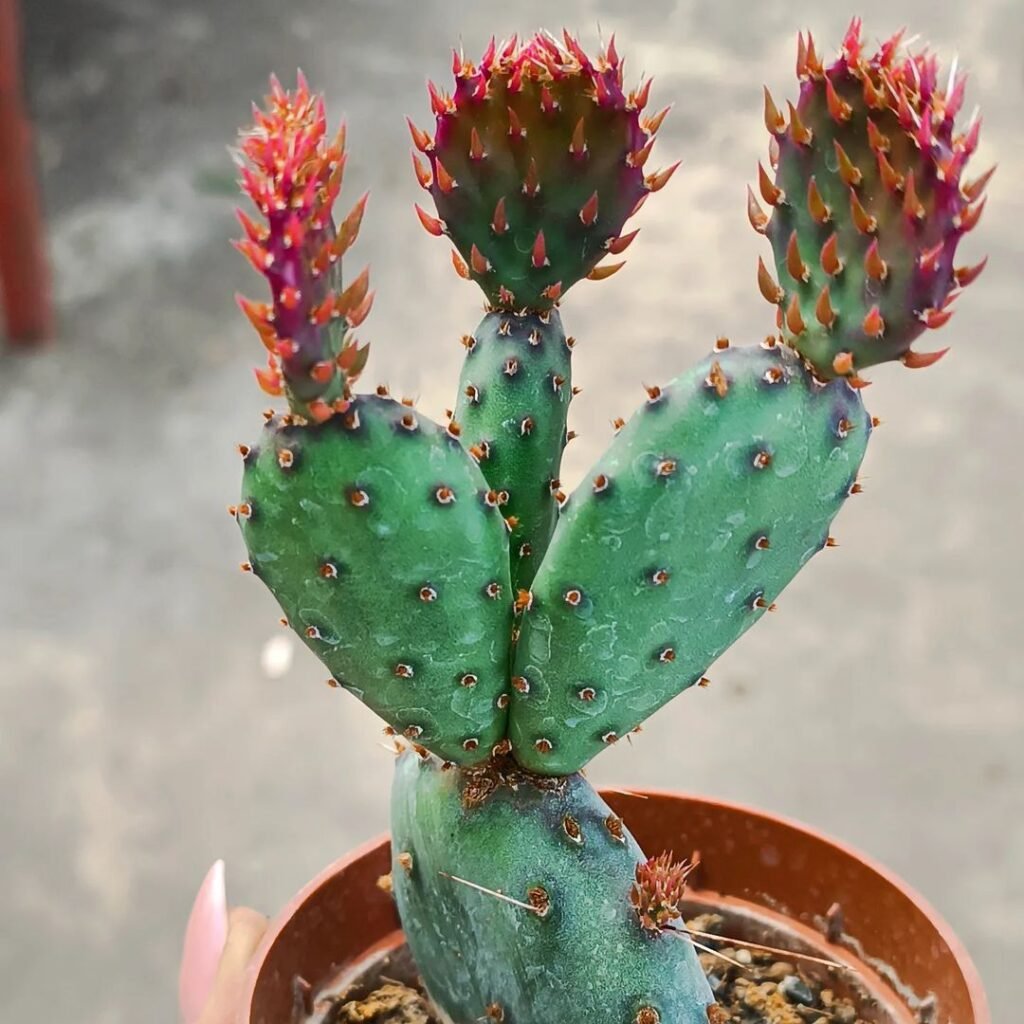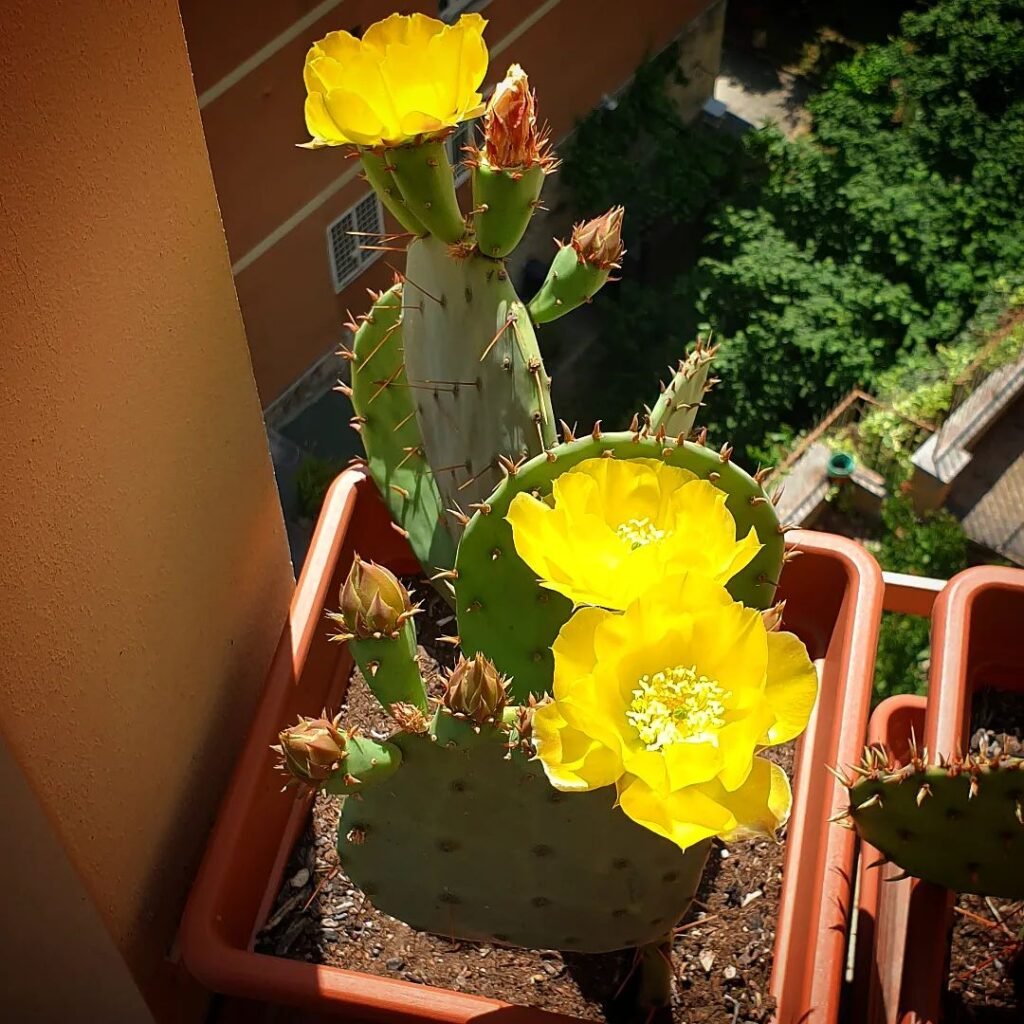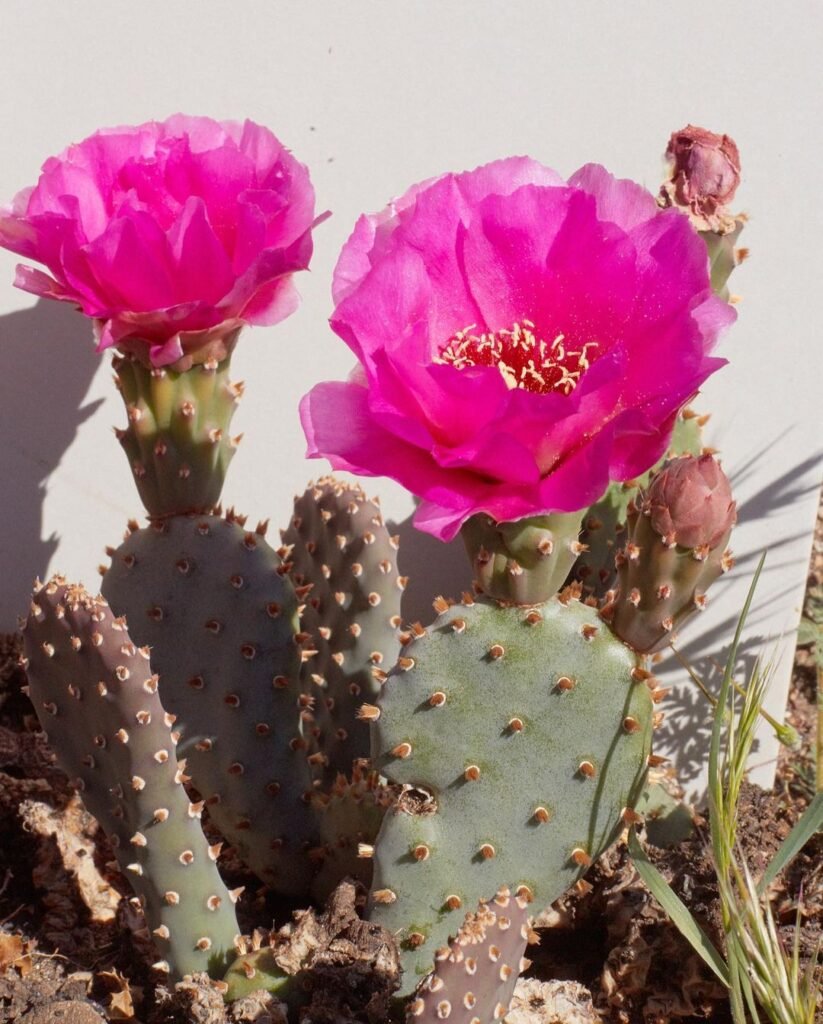Unlock the secrets to cultivating and maintaining a thriving prickly pear cactus with our detailed guide. From planting techniques to troubleshooting common issues, we cover everything you need to know to successfully grow this unique and low-maintenance succulent.
Prickly Pear Cactus Care (Opuntia)

The prickly pear cactus (Opuntia) is a beloved and distinctive addition to any garden or indoor plant collection. With its unique paddle-like stems and vibrant blooms, this hardy succulent has captured the hearts of plant enthusiasts worldwide. However, proper care is essential to ensuring its long-term health and vitality. In this comprehensive guide, we’ll cover everything you need to know to successfully grow and maintain a thriving prickly pear cactus.
Here’s a short chart with information about the Prickly Pear Cactus (genus Opuntia):
| Aspect | Information |
|---|---|
| Botanical Name | Opuntia spp. |
| Plant Type | Cactus, Succulent |
| Zones | 3-11 (depends on species) |
| Exposure | Full Sun |
| Bloom Time | Spring to Summer |
| Height/Spread | Varies widely depending on species |
Understanding Prickly Pear Cacti
Before we dive into the care instructions, let’s first explore the fascinating world of prickly pear cacti.
Native to the Americas, prickly pear cacti belong to the Opuntia genus, which comprises over 200 species. These versatile plants can be found growing in a wide range of environments, from deserts and prairies to coastal regions and even mountainous areas.
One of the most distinctive features of prickly pear cacti is their flat, paddle-shaped stem segments, known as “pads” or “nopales.” These pads are covered in clusters of sharp spines, which serve as a defense mechanism against herbivores and help conserve moisture in arid conditions.
In addition to their unique appearance, prickly pear cacti are also known for their edible fruit, commonly referred to as “tuna” or “prickly pear.” These vibrant, pear-shaped fruits are not only delicious but also packed with essential vitamins and antioxidants.
Choosing the Right Prickly Pear Variety
With so many species and cultivars available, selecting the perfect prickly pear cactus for your needs can be a daunting task. Here are a few popular options to consider:
1. Engelmann’s Prickly Pear (Opuntia engelmannii)

Native to the southwestern United States and northern Mexico, this variety is known for its large, yellow-green pads and bright yellow flowers.
| Aspect | Information |
|---|---|
| Botanical Name | Opuntia engelmannii spp. |
| Plant Type | Cactus, Succulent |
| Zones | USDA hardiness zones 8 to 10 |
| Exposure | Full Sun |
| Bloom Time | Spring to early summer |
| Height/Spread | Typically 3 to 5 feet tall and 4 to 8 feet wide, though in ideal conditions it can grow larger. |
2. Santa Rita Prickly Pear (Opuntia santa-rita)

A compact grower, this cultivar features deep purple pads and vibrant magenta blooms, making it a stunning addition to any garden.
| Aspect | Information |
|---|---|
| Botanical Name | Opuntia santa-rita spp. |
| Plant Type | Cactus, Succulent |
| Zones | USDA hardiness zones 7 to 11 |
| Exposure | Full Sun |
| Bloom Time | Spring |
| Height/Spread | Typically 3 to 6 feet tall and 4 to 5 feet wide |
3. Beaver Tail Cactus (Opuntia basilaris)

As the name suggests, this variety has distinctive paddle-shaped pads that resemble a beaver’s tail. It produces bright pink or magenta flowers and is well-suited for rock gardens or xeriscaping.
| Aspect | Information |
|---|---|
| Botanical Name | Opuntia basilaris spp. |
| Plant Type | Cactus, Succulent |
| Zones | USDA hardiness zones 8 to 10 |
| Exposure | Full Sun |
| Bloom Time | Late spring to early summer |
| Height/Spread | Typically 1 to 2 feet tall and 3 to 4 feet wide |
4. Bunny Ears Cactus (Opuntia microdasys)

A popular choice for indoor cultivation, the Bunny Ears Cactus is known for its small, rounded pads and dense clusters of golden spines, giving it a fuzzy appearance.
Once you’ve chosen your preferred variety, it’s time to focus on providing the proper growing conditions and care.
| Aspect | Information |
|---|---|
| Botanical Name | Opuntia microdasys spp. |
| Plant Type | Cactus, Succulent |
| Zones | USDA hardiness zones 9 to 11 |
| Exposure | Full Sun |
| Bloom Time | Summer |
| Height/Spread | Typically 2 to 3 feet tall and 3 to 6 feet wide |
Planting Prickly Pear Cacti
Site Selection

Prickly pear cacti thrive in full sun exposure, requiring at least 6-8 hours of direct sunlight per day. They prefer well-draining soil, as waterlogged conditions can lead to root rot and other issues. If planting outdoors, choose a location with sandy or rocky soil that mimics their natural desert habitat.
Container Planting
Prickly pear cacti can be successfully grown in containers, making them suitable for indoor cultivation or for those with limited outdoor space. Choose a pot with excellent drainage holes and use a cactus or succulent potting mix to ensure proper aeration and moisture control.
Planting Techniques
When planting a prickly pear cactus, handle the pads with care to avoid injury from the sharp spines. Use tongs or thick gloves for protection. Gently place the pad or cutting horizontally on the soil surface and cover the bottom half with potting mix, leaving the top half exposed. Water sparingly after planting to encourage root development.
Caring for Prickly Pear Cacti

Watering
One of the key advantages of growing prickly pear cacti is their drought tolerance and low water requirements. During the growing season (spring and summer), water your cactus every 7-10 days, allowing the soil to dry out completely between waterings. In winter, reduce watering to once a month or less, as the plants go dormant and require minimal moisture.
Fertilizing
Prickly pear cacti have modest nutrient needs and can thrive with minimal fertilization. Apply a balanced, cactus-specific fertilizer once or twice during the growing season, following the manufacturer’s instructions. Avoid over-fertilizing, as this can lead to excessive growth and potential problems.
Pruning and Propagation
Pruning is generally not necessary for prickly pear cacti, as their natural growth habit is typically well-contained. However, you can remove any dead or damaged pads as needed. Pruning also provides an opportunity for propagation, as the removed pads can be used to grow new plants.
To propagate, simply allow the cut end of the pad to callus over for several days, then place it horizontally on well-draining soil and lightly cover the bottom portion with potting mix. Mist the soil occasionally to encourage rooting.
Repotting
Prickly pear cacti have relatively slow growth rates and may only require repotting every 2-3 years. When repotting, choose a container only slightly larger than the previous one and use a well-draining cactus or succulent potting mix.
Pest and Disease Management
While prickly pear cacti are generally hardy and resistant to most pests and diseases, there are a few potential issues to watch out for:
- Mealybugs: These small, cottony insects can infest the pads and stems of your cactus. Remove them manually with a cotton swab dipped in rubbing alcohol or use an insecticidal soap.
- Scale Insects: These hard-shelled pests can also infest prickly pear cacti, appearing as small bumps on the pads. Treat with horticultural oil or insecticidal soap.
- Root Rot: Overwatering or poorly draining soil can lead to root rot, causing the pads to become soft and discolored. Allow the soil to dry out completely between waterings and ensure proper drainage.
- Sunburn: Excessive sun exposure can cause the pads to turn yellow or develop discolored patches. Gradually acclimate your cactus to direct sunlight or provide partial shade during the hottest hours of the day.
Enjoying the Beauty and Bounty of Prickly Pear Cacti
One of the greatest joys of growing prickly pear cacti is the opportunity to admire their vibrant blooms and harvest their delicious fruit (if applicable to your variety). Here are a few tips to make the most of these unique plants:
- Flowering: Most prickly pear cacti produce beautiful, cup-shaped flowers in shades of yellow, orange, red, or purple. To encourage blooming, ensure your plant receives ample sunlight and proper watering during the growing season.
- Harvesting Fruit: If your prickly pear cactus produces fruit, it’s important to handle the pads and fruit with care to avoid injury from the sharp spines. Use tongs or thick gloves to harvest the fruit when it’s fully ripe and has a deep, vibrant color. The fruit can be enjoyed fresh, juiced, or used in various culinary applications.
- Landscaping: Prickly pear cacti make excellent additions to xeriscape gardens, rock gardens, or as unique accents in mixed borders. Their drought tolerance and low maintenance requirements make them ideal for water-wise gardening.
- Indoor Cultivation: For those with limited outdoor space, prickly pear cacti can also be grown indoors as striking houseplants. Choose a sunny location and provide proper lighting and care to enjoy their unique beauty year-round.
With their striking appearance, low-maintenance requirements, and potential for edible fruit, prickly pear cacti are a versatile and rewarding addition to any garden or indoor plant collection. By following the guidance in this comprehensive guide, you’ll be well-equipped to cultivate and care for these remarkable succulents, creating a vibrant and resilient oasis in your own backyard or home.
Pingback: Fishbone cactus : How to grow and care for this unique houseplant
Pingback: Zinnias Flower: Top 10 Varieties for Colorful Gardens